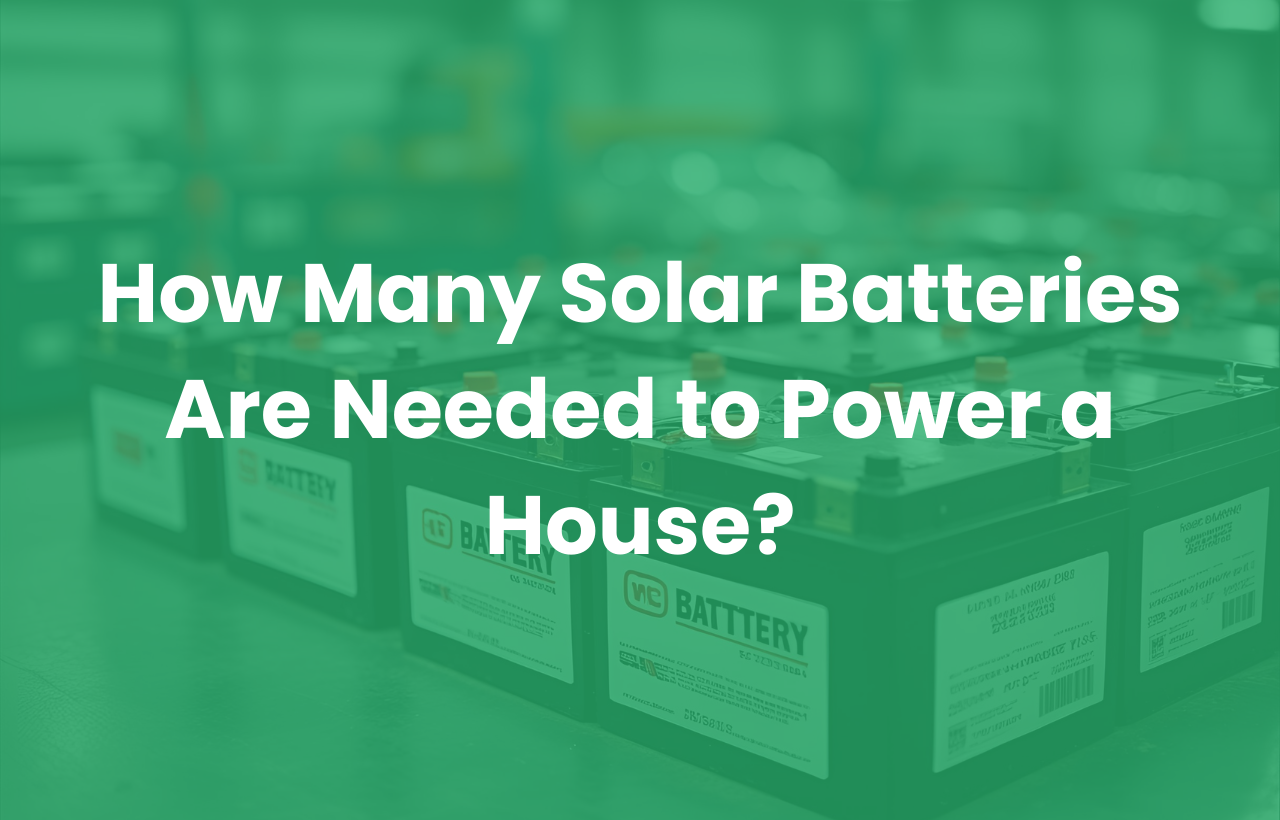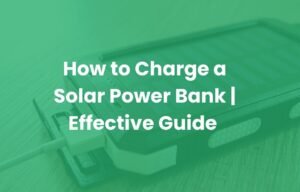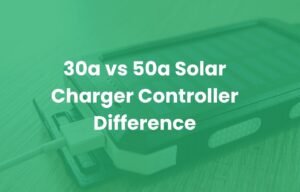Imagine a severe storm hits your city and your electrical grid fails. There is light all around you, then darkness. However, your Wi-Fi is still working, your refrigerator is cool, and some of your lamps are brightly lighting up your house.
This is not today’s miracle; it is the power of the solar battery. How many solar batteries are needed to power a home is the key question to achieve this type of peace.
The answer to this question is not a simple number. If we say that “two batteries” or “three batteries”, then it is the same as saying “three bags of groceries”.
It depends on the number of family members and how long you want to store your food. If you don’t know these, then the number is meaningless.
In this article, we will break down the solar panel sizing, go over the main elements that affect how many solar batteries are needed to power a house, such as your daily energy usage and the equipment you consider necessary.
We’ll cut through the sales speak and provide you with the information you need to speak properly with any installer.
Table of Contents
ToggleWhy “How Many” is the Wrong First Question
We need to change our perspective before we can even start figuring out numbers. The goal is to address a particular energy need rather than just storing batteries in a garage. We must first define two essential questions to do that:
- What are your desired battery uses?
- What are your essential loads that you must power?
Defining Your “Why”
The size of the system you’ll require is significantly influenced by the reason you want batteries. The three most common objectives are:
Backup Power (Outage Protection): This is the most popular objective. In the event of a grid failure, you want to keep your essential appliances operating. Which appliances you wish to use and for how long will decide how big your battery bank should be.
Self-Consumption / Time-of-Use (TOU) Optimization: If you have solar panels, you may wish to retain your excess energy rather than selling it back to the grid at an extremely low price.
Then, in the evening, when grid electricity is costly, you consume that saved energy. Compared to a full backup, this uses less battery capacity.
Off-Grid Living: This is the most challenging situation calls for a system large enough to continually supply electricity to your entire home without a grid connection. A significantly higher cost is needed for this huge project.
Conducting a Home Energy Audit: Know Your Loads
The problem must be understood before a solution can be sized. First, you need to know how much energy your home uses.
Establish Your Starting Point: Take a look at your electricity bill. The amount of kWh you use each month will be shown. Divide that by 30 to get an estimate of your daily kWh usage. Despite significant variations, the typical American home uses about 30 kWh daily.
Identify Essential Appliances: You most likely don’t need to power your entire house during an outage. You must set priorities. List the “essential loads.” Usually, these consist of:
- Refrigerator
- Freezer
- Lighting, particularly LED lights
- WiFi router and modem
- Chargers for phones
- A few of the important outlets
Pro Tip: Figure out the accurate wattage of the equipment you require by using an energy monitor or plug-in watt meter. This real-world information is necessary for precise sizing.
The Key Metrics: kWh, kW, and Depth of Discharge
Let us now discuss the language of batteries. One cannot compromise on understanding these three words.
Kilowatt-hour (kWh): The amount of “fuel” in the tank is a measure of energy capacity. It lets you know how long your appliances will run on your batteries. A 10 kWh battery should be able to power a 1 kW device for 10 hours.
Kilowatt (kW): This is an indicator of power, or the speed at which energy may be supplied. It indicates the maximum number of appliances you can operate together.
You cannot use a battery with a 5 kW capacity to run appliances that use more than 5 kW at once (for example, a water pump, microwave, and air conditioner may use more than 5 kW).
Depth of Discharge (DoD): A battery should never be completely dead, as this damages the battery. The percentage of the battery’s capacity that has been consumed is known as the DoD.
A recommended 90% DoD is safe if you are using 9 kWh of a 10 kWh battery.
How Many Solar Batteries Are Needed to Power a House?
(The Right Answer)
Let’s understand it using a real-world example.
Suppose that during an outage, your essential load audit indicates that you require 10 kWh of power per day. Also, you decide that your necessary appliances will never use more than 5 kW at one time.
Let’s now examine some common battery models:
- Tesla Powerwall 2: About 13.5 kWh of usable capacity with 5 kW of constant power (after DoD).
- LG Chem RESU Prime 16H: About 16 kWh of usable capacity with 5 kW of constant power.
- Enphase IQ Battery 10T: About 10.5 kW of usable capacity with 3.84 kW of constant power.
Our example home’s analysis:
- 10 kWh daily is the required capacity
- 5 kW is the required power
- With 13.5 kWh of capacity, one Tesla Powerwall would provide you with more than enough power (kW) for a whole day. It’s possible that you could power a few additional comforts.
- Additionally, one LG Chem RESU 16H might be useful, providing even more capacity.
Examples of high-capacity, high-power batteries that should be sufficient for a home with daily power usage of 10 kWh and 5 kW are an LG Chem RESU 16H and a Tesla Powerwall
Beyond the Battery: The Role of a Critical Load Panel
A critical load panel is an essential component of any backup system. Your installer will install this independent electrical panel, which will only have the circuits you’ve determined are necessary. Your battery system will automatically only power the circuits on this panel in the event of a grid outage.
When you try to power your 60-inch TV, dry your clothes, and heat your oven all at once, you risk your batteries dying in a matter of minutes. It is a regular practice for a reason and is the most efficient technique to manage your energy.
The Final Factor: Budget and Future-Proofing
Systems with batteries require a large cost. In addition to installation, each battery may cost several thousand dollars. It’s frequently a balancing act between your budget and your ideal backup plan.
Many homes start with a basic backup system (such as a single battery for the refrigerator, lights, and internet), then, as their demands increase, they add more batteries. Ask about the system’s scalability before receiving offers. For next year, is it simple to install a second battery?
Conclusion
The answer to the question of how many solar batteries are required to power a house is very specific. The way forward is simple and clear to you. Conduct an audit first.
Identify your kW and kWh requirements. Consult a qualified, trustworthy solar and battery installer only after that. Apply all of the knowledge you have gained here to completely understand their proposals and ask meaningful questions.
Achieving energy resilience requires designing a system that will give you years of savings, security, and comfort.
Are you prepared to move forward? Follow the advice in this article and get a professional assessment from a few certified area installers.
They can provide you with an exact price that is customised for your particular house and requirements.





